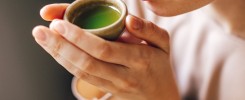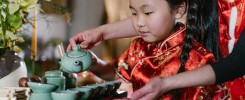By a veteran tea merchant and taster with over 20 years in the trade
Table of Contents
The Illusion of “No.1”
Every tea drinker, at some point, asks: “Which is the best tea in the world?”
After two decades sourcing teas from China, India, Sri Lanka, and Japan, I’ve learned that this question rarely has a single, truthful answer. What we call “No.1” depends on the lens you choose — popularity, craftsmanship, health benefits, or emotional connection.
In reality, tea doesn’t compete; it represents harmony between human skill and nature’s rhythm. To find the “best,” one must understand how tea expresses its environment, its maker, and the drinker’s intention.
1. Popularity: The Reign of Black Tea
If we measure by sheer volume and global reach, black tea stands unchallenged. Roughly 70% of the world’s tea consumption is black. From English Breakfast in London to strong Assam chai in India, it dominates cultures and continents.
But this dominance isn’t accidental. Historically, black tea’s fully oxidized structure made it more stable for trade. During the 18th and 19th centuries, its resilience allowed it to survive long ocean journeys, fueling the British Empire’s tea economy.
Even today, the appeal remains practical — bold flavor, strong caffeine, and versatility. Whether you drink it with milk, lemon, or straight, black tea’s character doesn’t fade.
Still, as a tea merchant, I often remind customers: “Popularity is not the same as superiority.” Black tea is the world’s most consumed, not necessarily the most profound.
2. Health and Purity: Green Tea’s Quiet Power
If black tea rules commerce, green tea leads in health science.
Unlike black tea, green tea is unoxidized, preserving catechins — powerful antioxidants linked to heart health, metabolic support, and anti-aging. But what matters more than health headlines is how those compounds behave in the cup.
When properly brewed (around 75–80°C), the tea retains its amino acids, especially L-theanine, which promotes calm alertness. This is not marketing; it’s chemistry at work.
A well-made Longjing (Dragon Well) from Hangzhou or Japanese Sencha offers a clean vegetal sweetness balanced by gentle umami — a flavor you can’t fake with processing shortcuts.
Yet, green tea also exposes a paradox: it’s the most fragile of teas. Mishandled leaves, improper temperature, or exposure to air can destroy its flavor within weeks. Its greatness depends as much on your care as on the grower’s craft.
3. Craftsmanship: The Art of Oolong
Between green and black lies oolong, the most technically demanding category to produce.
Oolong requires intuition — not just measurement. The leaf must be partially oxidized, sometimes roasted, sometimes twisted, and each decision changes its entire personality.
A high-mountain oolong from Taiwan, for example, can express buttered orchids and mineral clarity, while a roasted Tieguanyin from Fujian might echo caramelized nuts and honey.
From an expert’s perspective, oolong represents the craftsman’s fingerprint. It’s where human skill most visibly shapes what nature provides. When you sip a complex oolong, you are tasting not only the terroir but also the decision-making of a master who spent a lifetime refining touch, timing, and temperature.
In this sense, oolong tea could rightfully claim to be the “No.1 tea” for artistry — the one that most purely expresses the collaboration between hand and leaf.
4. Legacy and Time: Pu-erh’s Living Soul
If black tea represents strength and green tea purity, Pu-erh represents wisdom.
Pu-erh, from Yunnan province, is the only tea that ages and transforms after production. Its microbial fermentation continues for years, creating layers of aroma — wood, earth, plum, leather, sometimes even camphor.
Collectors treat Pu-erh like fine wine. A well-stored 20-year-old Sheng Pu (raw Pu-erh) can taste round, warm, and slightly sweet, while a Shou Pu (ripe Pu-erh) offers depth and comfort.
But beyond sensory pleasure, Pu-erh teaches patience. Unlike green tea, which is best young, Pu-erh rewards time. It evolves — slowly, quietly, meaningfully.
I often tell my students: “If you want to understand tea, learn Pu-erh. It mirrors life — the longer it matures, the deeper it becomes.”
For this reason, many connoisseurs regard Pu-erh as the “No.1 tea of philosophy and soul.”
5. The Hidden Variables: Water, Storage, and Intent
Tea’s ranking also depends on how you treat it. Even the finest leaves can fail under bad brewing or storage.
- Water quality: Soft, low-mineral water extracts complexity; hard water dulls it. In my experience, filtered rainwater or spring water brings the truest taste.
- Storage: For green and oolong, airtight containers away from light are essential. For Pu-erh, airflow matters — clay jars or breathable wrapping help natural fermentation.
- Intent: Tea reflects the drinker’s state of mind. Brewing in haste never yields harmony.
A professional taster learns that technical perfection means little if intention is absent. The best cup of tea balances chemistry with mindfulness.
6. A Deeper Truth: “No.1” Depends on the Drinker
So, after years of cupping thousands of teas, here is the truth no marketer will tell you:
The best tea in the world is the one that fits your current season of life.
When you need clarity, you reach for green tea.
When you crave grounding, black tea steadies you.
When you seek complexity, oolong challenges your senses.
When you long for reflection, Pu-erh keeps you company.
Tea is not about ranking. It’s about resonance — the subtle connection between plant, maker, and drinker.
Final Thoughts
If forced to name one tea as “No.1,” my answer would be none and all.
Because tea’s beauty lies not in supremacy but in diversity. Each type — black, green, oolong, Pu-erh — dominates its own domain of excellence. And for a true tea lover, the joy is not in finding the best, but in exploring how every cup carries a piece of nature’s language.
In the end, tea is not a contest.
It’s a conversation — between leaf and water, time and patience, you and the world.
And perhaps, that’s what makes tea truly number one.

